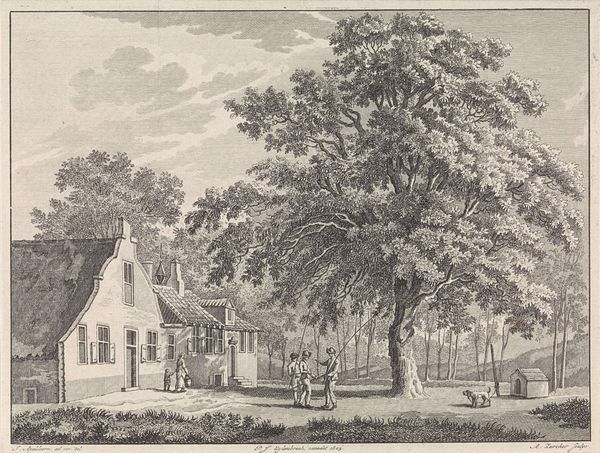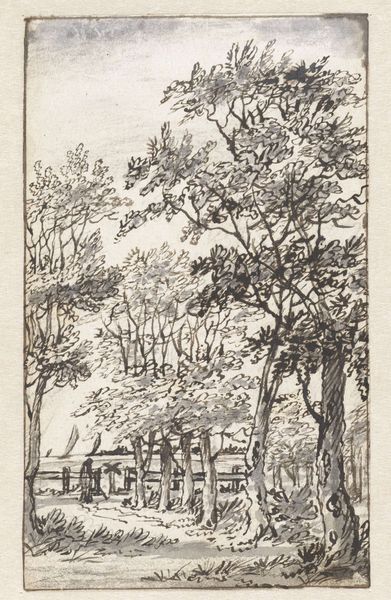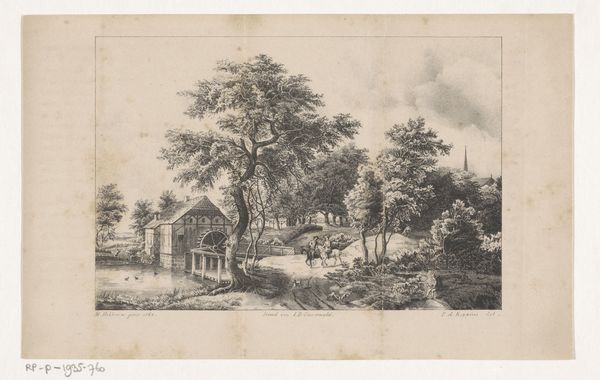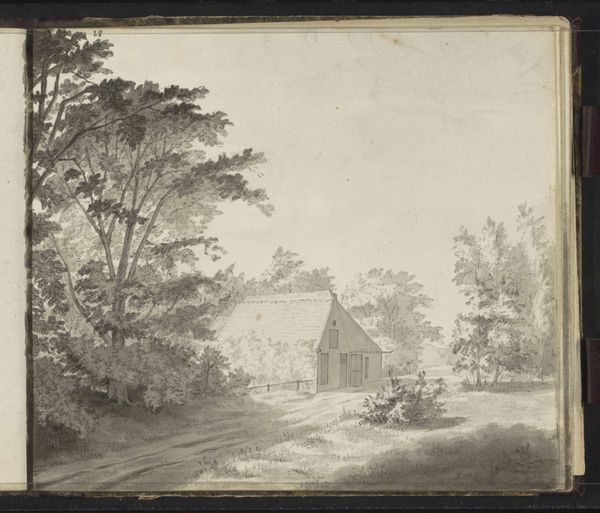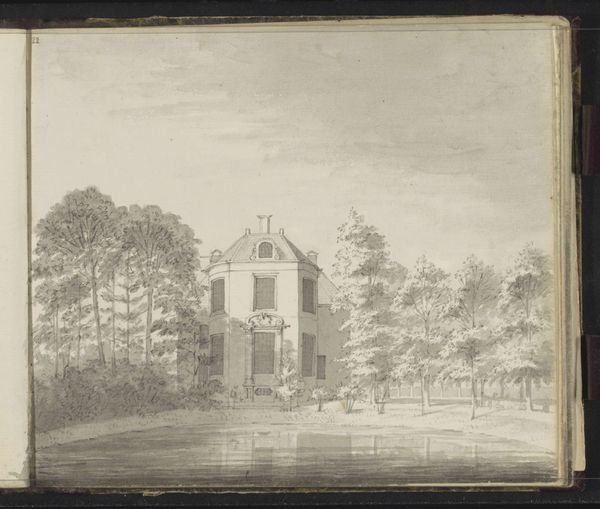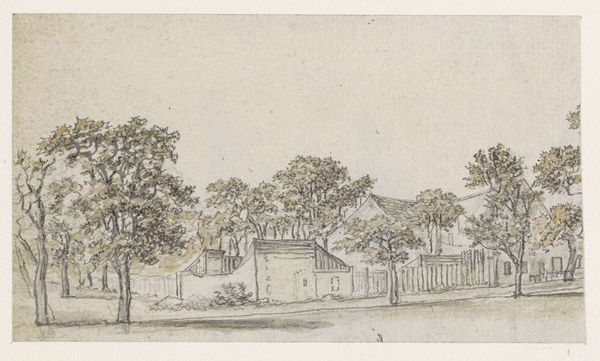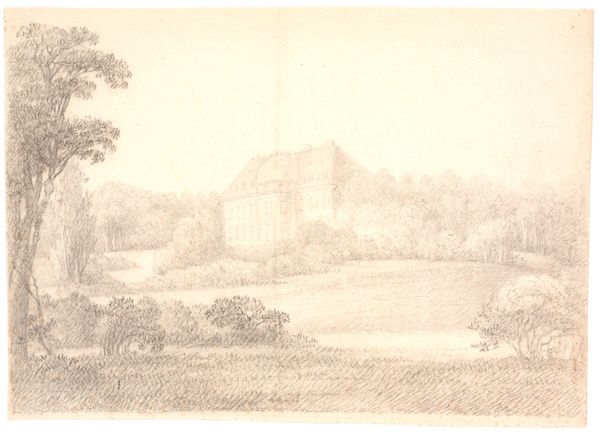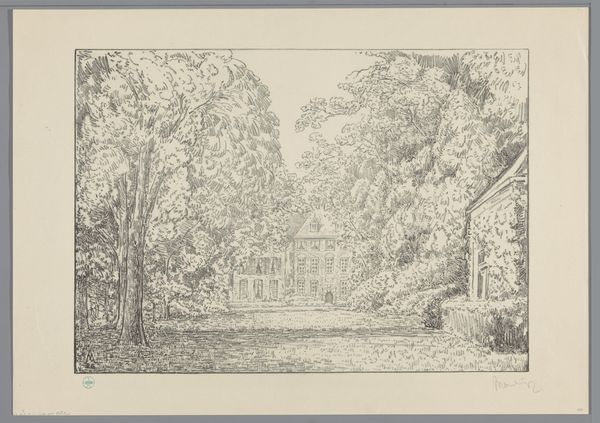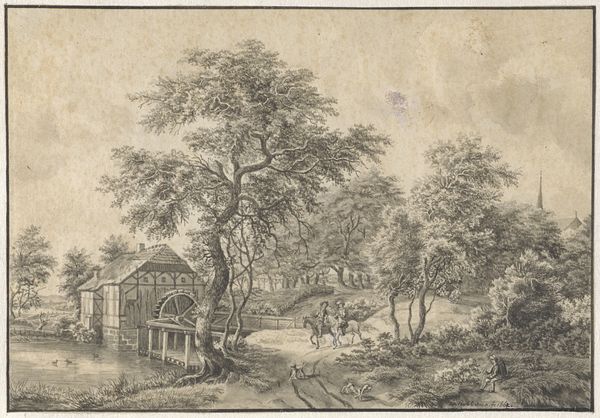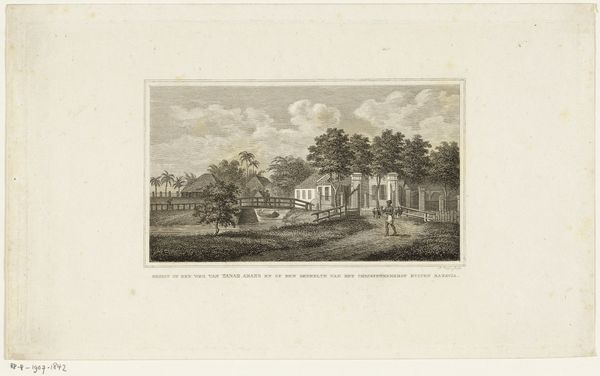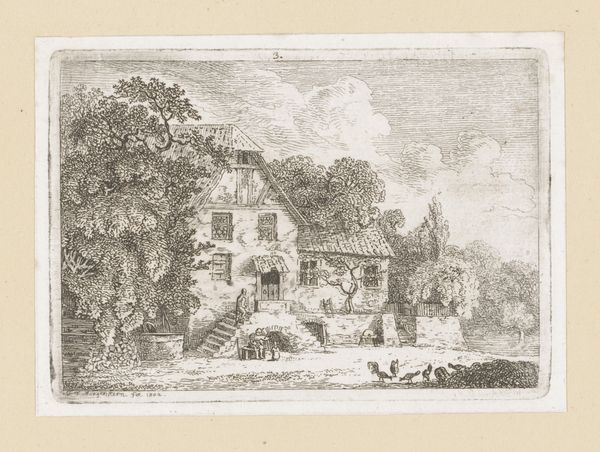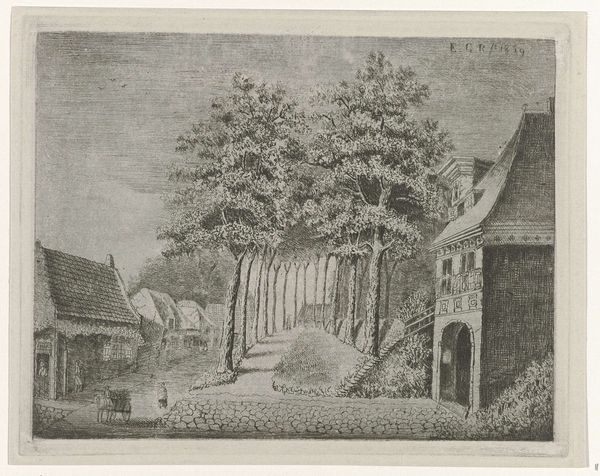
print, etching
# print
#
etching
#
landscape
#
romanticism
#
line
#
realism
Dimensions: 296 mm (height) x 229 mm (width) (bladmaal), 247 mm (height) x 199 mm (width) (plademaal), 213 mm (height) x 179 mm (width) (billedmaal)
Curator: This etching, entitled "Düsternbrock. 1te Partie," was created around 1790 by Heinrich Grosch and resides here at the Statens Museum for Kunst. Editor: It’s quite evocative, this landscape. There's a sort of hushed intimacy in the way the house is nestled within that dense collection of trees. Curator: Absolutely. Grosch uses a sophisticated interplay of line to structure depth. Note the crisp lines defining the architecture in contrast to the looser, more organic lines used to portray the foliage. It's a deliberate juxtaposition of manmade structure against the wildness of nature, all elegantly bound in a composition relying heavily on light and shadow to convey spatial relations. Editor: Yes, and observing closely, one appreciates the process of printmaking; consider the labor required to generate that fine detail on the plate. We often forget the manual dexterity involved, the constant adjusting of tools, and even the selection and treatment of the copper or zinc itself that Grosch employed for this print. This attention to craft challenges our modern, detached consumption of art, inviting us to reflect on labor and production itself. Curator: Very true. And structurally, the two figures in the foreground serve as a point of entry for the viewer’s eye, leading us through the garden and ultimately toward the focal point which is this solitary building partially concealed by greenery. One cannot deny its success, given its careful adherence to principles evident across the Romantic landscape tradition. Editor: The stark realism layered into the print also encourages thought on how resources during this period were procured, highlighting land ownership practices, resource use, and potentially revealing aspects related to environmental transformation and impacts connected to early urbanization trends during this era, subtly hinting at historical realities through tangible impressions. Curator: It speaks to how an apparently simple etching embodies considerable complexities once you delve into the choices that inform its structural properties. Editor: Indeed. It becomes clear there are social narratives woven tightly within material applications apparent for observation—more than just aesthetics on paper, this.
Comments
No comments
Be the first to comment and join the conversation on the ultimate creative platform.

